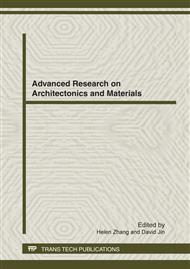p.46
p.51
p.55
p.60
p.64
p.70
p.74
p.78
p.83
Analyses of High Grade Strength Steel Bars in the Design of a Five-Storey Reinforced Concrete Structure with Comparison of Energy Consumption and CO2 Emission
Abstract:
Energy consumption and CO2 emissions in buildings is becoming an increasingly important issue. Steel is a major building material with high energy cost. In a reinforced concrete (RC) structure, it accounts for the maximum energy consumption. There is a need to quantify the steel amount in RC for various situations so that reduction or optimization in steel usage can be analyzed. In this paper two different calculations (Calculation-I and Calculation-II) are conducted by using two groups of steel in designing beams, columns and plates for a 20000 m2 five-storeyed frame RC structure. In Calculation-I, or Cal-I in abbreviation, the steel used for beams, columns and plates is HRB335, HRB400 and HPB235 respectively. In Calculation-II, or Cal-II in abbreviation, the steel used for beams, columns and plates is HRB400, HRB500 and CRB550 respectively. The strength of steel used in Cal-II is higher than that in Cal-I. The calculation is carried out by following the standardized concrete structural design code, and the steps involved in calculation are given in certain details as seen necessary. The corresponding energy for producing the steel used in beams, columns and plates is also computed and normalized on per square meter basis. The results show that Cal-II saves 101.76 tons of steel than Cal-I, or 5.09kg/m2, which means a saving of about 64.11 t of standard coal or 1.6×102 t CO2 for the whole structure, or 3.2 kg of standard coal or 7.98kg CO2 for per square meter.
Info:
Periodical:
Pages:
64-69
Citation:
Online since:
April 2012
Authors:
Keywords:
Price:
Сopyright:
© 2012 Trans Tech Publications Ltd. All Rights Reserved
Share:
Citation:


